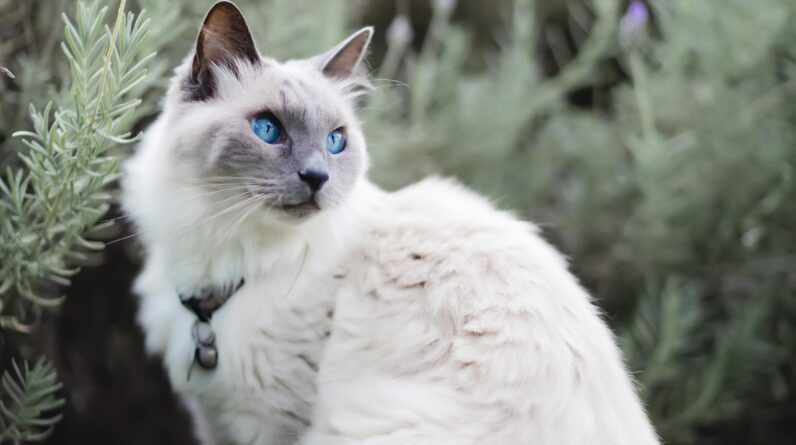
Are pesky parasites making your ginger cat’s life miserable?
You’re not alone. Many cat owners face the challenge of keeping their furry friends free from fleas and ticks. These little critters are more than just a nuisance; they pose serious health risks to your beloved pet.
One crucial fact stands out: even indoor cats are at risk of flea and tick infestations. This means that all cats, including those with striking orange coats, need protection.
Our article provides effective strategies to prevent these unwanted guests from bothering your ginger cat. Learn about the best products and practices for a pest-free feline friend.
Keep reading for tips to keep your kitty comfy and carefree!
Key Takeaways
- Consult with a veterinarian before selecting flea and tick prevention methods for ginger cats to ensure safety, especially considering their age, weight, and health conditions.
- Use regular grooming techniques such as flea combs to catch early signs of infestation and inspect for ticks or fleas on your cat’s skin during the process.
- Keep your cat’s living environment clean by vacuuming and washing bedding often; this reduces the likelihood of flea and tick infestations in your home.
- Consider different types of prevention like topical treatments, oral medications, shampoos, sprays, or collars based on what is most effective and suitable for your cat’s specific needs.
- Be cautious when using natural prevention methods; always discuss these options with a veterinarian first to prevent potential toxic effects on your ginger cat.


The Importance of Flea and Tick Prevention for Ginger Cats
Flea and tick prevention is crucial for ginger cats to avoid potential health risks. Allergic reactions and infestations can be prevented with proper prevention methods.
Potential health risks


Fleas and ticks pose serious hazards to ginger cats. These pests can transmit diseases, some deadly. For instance, ticks carry Lyme disease which affects both pets and people. Flea bites may also lead to anemia in cats, especially kittens with heavy infestations.
Furthermore, certain ingredients in preventatives can be toxic if not used correctly.
Cats are particularly sensitive to permethrin and pyrethrin; exposure could result in severe illness or death. Therefore, it’s crucial to select flea and tick prevention products wisely for your cat’s safety.
Next up, we’ll discuss allergic reactions that might arise from fleas and ticks—another important aspect of your pet’s health to consider.
Allergic reactions


Ginger cats, like all felines, can have allergic reactions to flea and tick treatments. It’s crucial to pick products that are safe for your pet.
Permethrin and pyrethrin, often found in these medications, can be highly toxic to cats.
Always read labels carefully before applying any treatment on your ginger cat.
Watch for signs of discomfort or unusual behavior after starting a new flea and tick prevention routine. Symptoms like excessive scratching, red skin, or swelling could indicate an allergic reaction.
If you notice anything alarming after using flea and tick products, seek immediate veterinary care for your cat’s safety.
Choose treatments wisely to protect your ginger cat from harmful side effects while preventing infestations effectively.
Prevent infestations


Keep your home clean to stop fleas and ticks from settling in. Wash bedding regularly, vacuum frequently, and treat carpets with safe anti-flea products.
Seal any cracks where pests could enter.
Always dispose of trash properly to not attract wild animals that carry these parasites.
Use a flea comb weekly; this can catch and remove fleas early on.
During grooming sessions, also check for ticks since they need immediate removal. After outdoor play, inspect your cat’s coat and skin thoroughly as well—fleas aren’t just an indoor problem.
Next up: exploring the top options available for effective flea and tick prevention for ginger cats.
Top Options for Flea and Tick Prevention for Ginger Cats


Topical treatments, such as spot-on applications, are a popular choice for preventing fleas and ticks.
Oral medications offer a convenient option for cat owners who prefer not to use topical treatments.
Topical treatments


One option for flea and tick prevention is topical treatments. These products are applied directly to your cat’s skin.
They often come in the form of spot-on treatments, which are easy to apply and provide effective protection against fleas and ticks for a month or more.
Be cautious about using any product not specifically labeled for use on cats – some dog-specific formulas contain ingredients that can be harmful to felines.
Topical treatments are convenient and provide an added layer of protection against infestations on your ginger cat.
Always consult with your veterinarian before starting any new flea or tick prevention regimen, especially when it involves topical applications.
Oral medications


Moving on from topical treatments, oral medications are another effective option for flea and tick prevention in ginger cats. Bravecto®, a popular choice, is recommended by veterinarians and provides long-lasting protection against fleas and ticks.
These medications come in the form of chewable tablets or flavored liquids that make administration easy for cat owners.
It’s important to choose oral medications carefully due to concerns about their potential toxicity, especially for ginger cats who may be more sensitive to certain ingredients.
Regular consultation with a veterinarian can help ensure the safety and effectiveness of these preventive measures.
When choosing an oral medication, consider your cat’s age, weight, and any existing health conditions to determine the most suitable option.
Additionally, it’s crucial to be aware of the active ingredients used in these products and their potential impact on your cat’s well-being.
Shampoos and sprays


When choosing a flea and tick prevention method for your ginger cat, consider shampoos and sprays.
These products offer direct application to your cat’s fur, effectively targeting pests.
Flea and tick shampoos can provide immediate relief from infestations, while sprays offer a convenient way to treat both your cat and their living environment.
Be cautious with certain ingredients found in flea and tick shampoos or sprays as they may be toxic to cats.
Prioritize products recommended by veterinarians for safe yet effective prevention.
Flea and tick collars


Flea and tick collars offer continuous protection against pests. Cats wear the collar, and it releases active ingredients that repel or kill fleas and ticks.
The collar’s convenience makes it effortless for cat owners to safeguard their pets from infestations, reducing the risks of allergic reactions and potential health issues.
Some flea and tick collars use natural essential oils as an alternative to chemical-based options.
These can be a good choice for pet owners concerned about the toxicity of certain chemicals.
When choosing a flea and tick collar, consider your ginger cat’s age, weight, and any existing health conditions.
Ensure effectiveness against specific pests while also factoring in ease of use and cost.
Factors to Consider When Choosing a Prevention Method
Consider your cat’s age, weight, and existing health conditions before choosing a prevention method. Ensure it is effective against specific pests and easy to use.
Age and weight of cat


Consider your cat’s age and weight when choosing flea and tick prevention.
Consult a veterinarian to determine the most suitable treatment based on your cat’s needs. Keep in mind that some preventatives may be unsafe for younger or smaller cats.
Ensure the safety and effectiveness of the prevention method by taking into account your ginger cat’s age and weight, ensuring their well-being.
Now let’s move on to discussing existing health conditions affecting your feline companion.
Existing health conditions


Consider your ginger cat’s current health conditions when choosing a flea and tick prevention method.
Specific existing health issues may make some preventative options unsuitable for your pet.
For instance, cats with skin sensitivities or allergies may need special consideration when selecting a prevention method.
Additionally, if your cat has any underlying medical conditions, it’s essential to consult with a veterinarian before starting any new flea and tick prevention regimen to avoid potential complications.
Furthermore, some preventive treatments can interact negatively with certain medications that your cat might be taking for other health issues.
Always discuss your cat’s existing health conditions with the vet to ensure the chosen preventative measure is safe and will not exacerbate any ailments.
Effectiveness against specific pests


After considering your cat’s existing health conditions, it’s crucial to assess the effectiveness of flea and tick prevention methods against specific pests.
Permethrin and pyrethrin are highly toxic to cats, hence consider alternative options for protecting your ginger cat from fleas and ticks.
Bravecto® has been recommended as an effective solution for flea and tick prevention in cats, providing peace of mind for pet owners worried about infestations.
Combing through your cat’s fur with a flea comb can also help eliminate fleas while avoiding products containing potentially harmful ingredients will contribute to the overall well-being of your feline friend.
Ease of use


Topical treatments are easy to apply directly on your ginger cat’s skin.
Oral medications can be administered with food or treats for convenience.
Shampoos and sprays offer a simple bathing method for flea and tick prevention.
Flea and tick collars provide hassle-free, long-lasting protection against pests, making prevention effortless.
When choosing a prevention method, consider the age and weight of your cat to ensure safety.
Discuss existing health conditions with a veterinarian to select the most suitable option.
Evaluate effectiveness against specific pests while factoring in ease of use and cost.
Cost


When choosing flea and tick prevention for ginger cats, cost is an important factor. Evaluate the long-term expenses of each option to find a balance between effectiveness and affordability.
Consider the ongoing costs of oral medications or topical treatments compared to the one-time price of collars or sprays.
Additionally, keep in mind that while natural prevention methods may seem cost-effective, they can pose health risks and may require frequent reapplication, potentially increasing overall expenses.
Best Practices for Flea and Tick Prevention


Regularly check for signs of infestation such as excessive scratching or skin irritation.
Keeping your cat’s environment clean can help prevent flea and tick infestations.
Regularly check for signs of infestation
Keep an eye out for any signs of fleas or ticks on your ginger cat’s fur. Using a flea comb can help you to catch pests early and reduce the chance of infestation.
Inspect your cat’s fur for any unusual scratching, redness, or tiny black spots that could indicate the presence of fleas or ticks.
Keep environment clean
Regularly clean your cat’s living area to prevent flea and tick infestations. Vacuum carpets, rugs, and furniture where your furry friend spends time. Wash their bedding frequently in hot water to eliminate any pests that may be lurking there.
Moreover, keep your outdoor spaces tidy by regularly mowing the lawn and removing any debris or overgrown vegetation. These simple steps can significantly reduce the risk of flea and tick exposure for your beloved ginger cat.
Eliminate areas of standing water around your home to deter ticks from thriving.
Mosquitoes are also attracted to stagnant water and are carriers of diseases that can affect cats.
By minimizing these breeding grounds, you help protect not only your feline friend but also yourself from potential health risks associated with these pests.
Regularly groom your cat
Groom your cat to remove fleas and ticks from its fur.
Also, grooming allows you to inspect for any signs of infestation.
Additionally, it can help reduce shedding and prevent hairballs.
Consult with a veterinarian
Before starting any flea and tick prevention regimen, consult with a veterinarian. Discuss your ginger cat’s age, weight, and health conditions to determine the best option. Your vet can recommend safe and effective prevention methods tailored to your cat’s specific needs.
Ensure you select products that are not toxic to cats as some ingredients can be harmful.
Prioritize safety when choosing preventative measures for your pet. Consulting a veterinarian is crucial in safeguarding the wellbeing of your beloved ginger cat.
Natural prevention methods
Before trying natural prevention methods, consult with a veterinarian to ensure safety. Consider using essential oils such as cedarwood, peppermint, or lavender for repelling fleas.
Neem oil can also be effective in preventing ticks and fleas on ginger cats. Additionally, consider adding diatomaceous earth to your cat’s living space as a non-toxic option for controlling pests.
Keep in mind that while natural methods are an option, it’s important to use them cautiously due to potential toxicity concerns.
Conclusion


In conclusion, flea and tick prevention for ginger cats is crucial. Emphasize practicality and efficiency by consistently checking for signs of infestation.
Engage with direct questions or calls to action by grooming your cat regularly.
Highlight the importance and impact of these strategies on your cat’s health. Offer additional resources or guidance from a veterinarian if needed.
Close with a motivational statement that encourages proactive prevention measures.
Remember, protecting your ginger cat from fleas and ticks significantly impacts their well-being.







